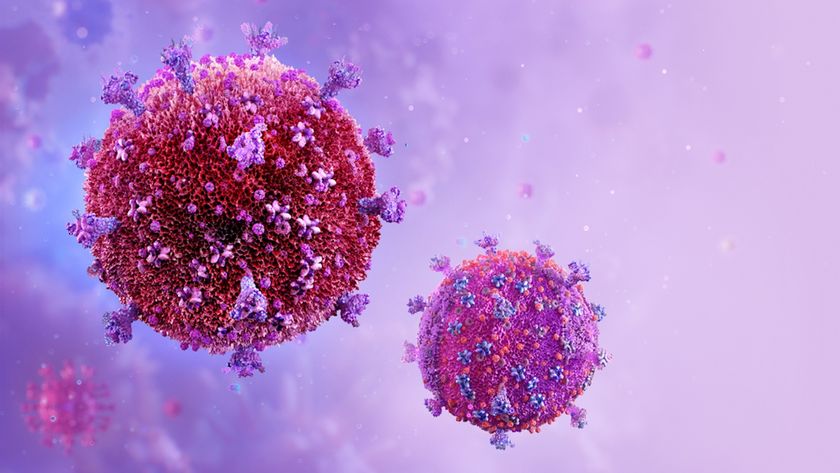AIDS: A 'Winnable' Public Health Battle?
This is the second in a six-part MyHealthNewsDaily series examining the problems and solutions related to six "winnable battles" in public health, as recently announced by the U.S. Centers for Disease Control and Prevention.
With one American becoming infected with HIV every 9.5 minutes on average, the devastating disease is clearly still a major public health concern. But experts in the field are optimistic that drastic reductions in the transmission rate can be achieved in just the next several years.
Acquired Immune Deficiency Syndrome triggered public hysteria when it emerged in the United States in the early 1980s. A cure remains elusive, but drug protocols developed in the 1990s have transformed AIDS from a death sentence for all to a more manageable, chronic condition for many.
Still, AIDS — which is caused by the human immunodeficiency virus (HIV) — has killed about 575,000 Americans to date, and another 1.1 million are living with HIV, mainly in the at-risk populations of gay and bisexual men , African-Americans, Latinos and drug addicts, according to statistics released by the White House.
Is this battle winnable?
The key to saving lives, experts say, is to prevent the infection from spreading. [Related: The Best HIV Prevention Strategies Differ by At-Risk Group]
"We agree that it's a preventable disease, and it should be winnable from a public health perspective," said Ernest Hopkins, legislative director of the San Francisco AIDS Foundation (SFAF). "But we need to change things in society, and the health care system, that promote HIV infection in the populations most at risk."
Sign up for the Live Science daily newsletter now
Get the world’s most fascinating discoveries delivered straight to your inbox.
Hopkins and others laud the Obama administration's recently released AIDS policy, which aims at a 25 percent drop in transmission rates over the next five years.
The policy "lays the foundation for a much more effective response," said Chris Collins, vice president and director of public policy for amFAR, The Foundation for AIDS Research.
What needs to be done to win
The key, experts agree, is for policies to help create more effective prevention programs.
Programs need to be done on a much larger scale, Collins said, and need to broaden their focus. Many currently concentrate on behavioral changes as the main contributor to the spread of HIV.
"It's not just about the behaviors [people in at-risk groups] practice," he said. "The environment in which they're living affects their vulnerability," which is influenced by poverty, housing and healthcare choices. Hopkins agreed. "We have to be smart when we're looking at a disease like HIV," he said. "Yes, it's preventable, but it's only preventable if you intervene. For example, there are still large pockets of the country where it’s very difficult to get a condom."
Collins called for increased funding for prevention programs, for which $948 million is set aside in President Obama's 2011 budget — only 3 percent of the total domestic HIV/AIDS allocation, according to the Kaiser Family Foundation.
"I think we can bring down HIV infections 50 percent over the next five years if we scale up the programming we have now," Collins said. "To me, that is winning."
Jennifer Kates, vice president and director of global health policy and HIV at the Kaiser Family Foundation, thinks the battle can be won.
"There's a lot of optimism, because there are a lot of tools that work," Kates said. "If we brought the incidence down, that would be a win."
- Part 1: Smoking: A 'Winnable' Public Health Battle?
- HIV & AIDS: Symptoms, Treatment and Prevention
- Top 10 Mysterious Diseases
This article was provided by MyHealthNewsDaily, a sister site to LiveScience.












